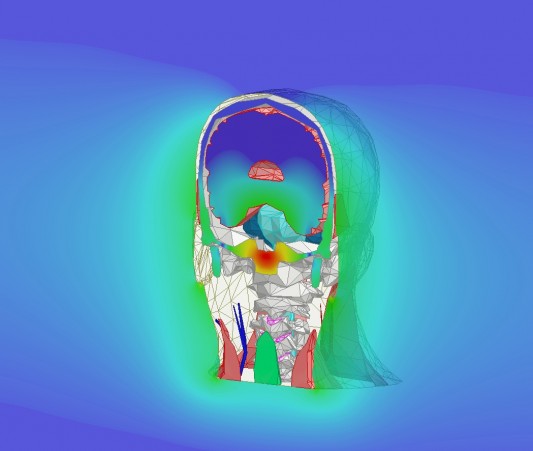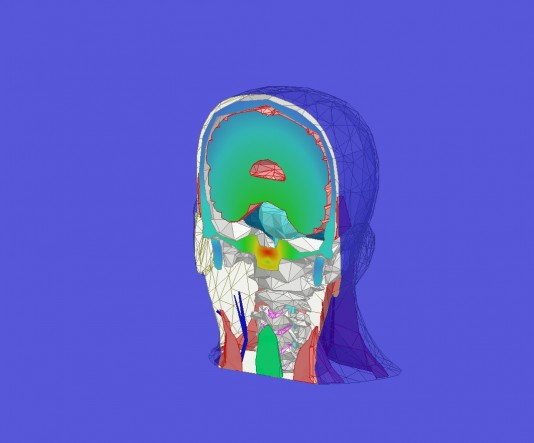Ruling allows Ansys HFSS to be used in evaluating implant RF emissions and specific absorption rate.
An FCC ruling in late February acknowledges the finite element method (FEM) of computer aided engineering is a valid technique to simulate a medical device that must communicate with other similar devices. As a result, organizations in the medical equipment sector can now use HFSS, the Ansys solution for FEM electromagnetic field simulation, to validate their transmitter designs. Ansys participated in trials that led to the ruling.
For specific electromagnetic applications in the healthcare industry, HFSS can now provide proof that a biomedical device transmitter design meets Federal Communications Commission (FCC) standards. The ruling will enable medical device developers to cut development time and costs while meeting safety standards.

Today’s sophisticated medical implants and other equipment often contain transmitters that communicate with other devices—transferring physiological data to a doctor via wireless communication, for example, which can be used to monitor, diagnose or treat a patient’s condition. The new FCC ruling applies to transmitters that are placed inside, on, or in close proximity to the human body. Developers of such medical devices must ensure that their equipment meets radio frequency (RF) emission safety standards. Additionally, manufacturers must comply with specific absorption rate (SAR) regulations, a measure of how the body absorbs energy when exposed to an RF electromagnetic field.
“The HFSS finite element solution is extremely valuable for designing antenna systems for implantable devices,” said Mark Lanciault, principal electrical engineer, Cambridge Consultants, Inc., a consulting group with biomedical experience. “Its use of an unstructured mesh is particularly well suited for modeling the complex curved surfaces within the human body, as seen in organs, tissues, and bones. Using HFSS allows us to optimize and verify performance of our implanted antenna designs in a representative environment. We will now be able to provide our customers accurate solutions specific to their device’s location in the body.”
“The medical device market is rapidly innovating to meet consumer demands and satisfy regulatory safety requirements,” said Markus Kopp, product manager for electronics at ANSYS. “This FCC ruling allows researchers to innovate with HFSS, developing new approaches that they can get to market faster—yet also maintain the FCC’s high standards of technical compliance. Beyond that, the ultimate beneficiary is the public, who will have quicker access to life-enhancing medical devices.”
Ansys requested that the FCC grant a waiver to the Medical Device Radiocommunication Service rules to permit FEM environmental evaluation of medical implant or body-worn equipment. The ruling granting the waiver cited scientific literature stating that FEM is a sound engineering technique.
HFSS software, which incorporates technology for 3D full-wave electromagnetic field simulation, enables engineers to design, simulate and validate the behavior of complex high-performance RF, microwave and millimeter-wave devices in next-generation wireless devices, defense communication systems, biomedical devices, and consumer electronics.






